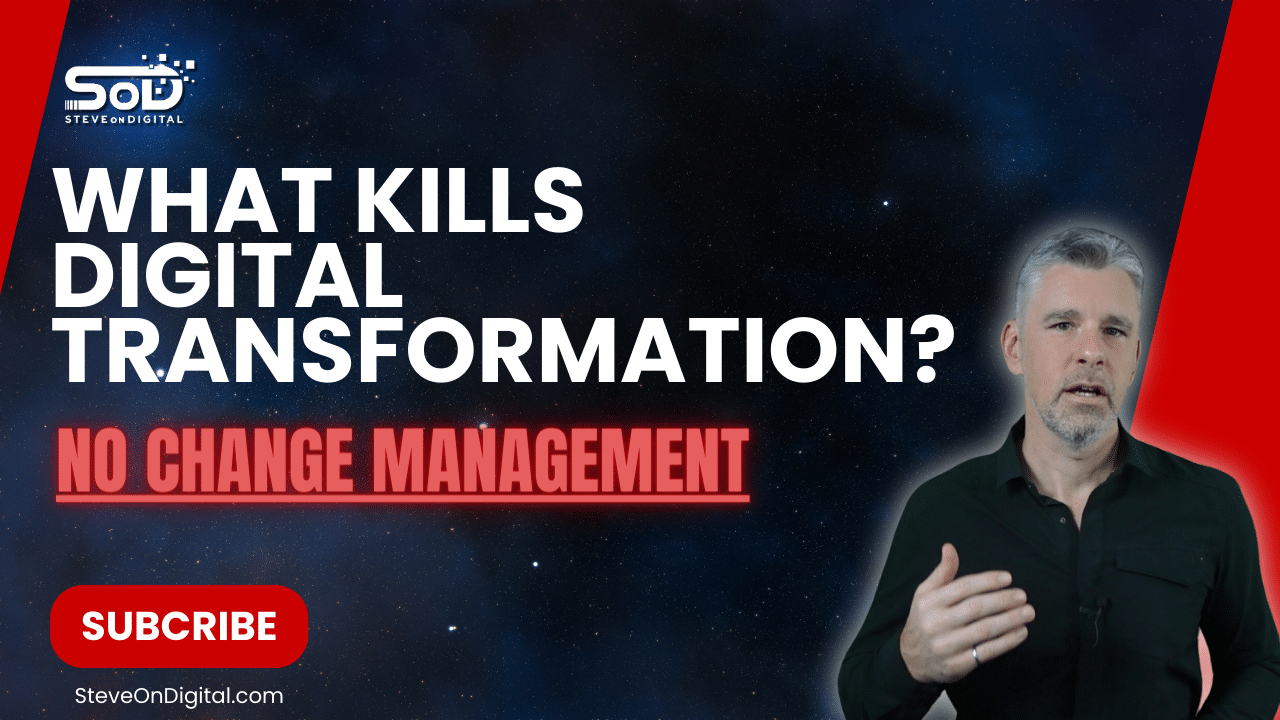So, you’ve realized that you need to embark on a digital transformation journey for the future success of your business. Now it’s time to get your team on board. Because, as you well know, people are often resistant to change… and transformation means a fundamental, overarching change. Guiding your team members in embracing this transformation is primordial because without careful change management, there is no digital transformation.
Through my years of experience as a CIO, I’ve come to understand that there are three main steps to change management as it applies to digital transformation. And each of these steps can be broken down into smaller, manageable actions. By following them in order, you will enhance your team’s reception to the digital transformation and the ways it will change their ways of working.
The first step is: Discover and Communicate. In this step you recognize the reasons your business needs to implement a digital transformation and then communicate these reasons to the team. So, first identify the need for a digital transformation. You can do this by analysing your current position as to your KPIs and then, stating your KPI objectives in the short-term, mid-term and long-term. Is a digital transformation a key element of obtaining these objectives? If so, it is time to communicate these benefits to your team and stakeholders.
Clearly communicating the reasons for the digital transformation will improve buy-in. Your people will feel supported and reassured that the change is necessary for the well-being of the business. They will hopefully also see the benefits they will experience first-hand (i.e. less manual data entry, less repetitive communications, better job security). As employees are aware of the changes and also the reasons behind the changes, they will be more likely to adapt.
It is now time to assess employee skills since they will have to incorporate new tools into their workflow. Assess which skills are lacking so that you can later provide the training necessary to fill these gaps. Remember that employees cannot be expected to learn how to use a new tool on their own. They will need relevant training.
Once you have discovered the needs and have communicated them to the team, it is time for step two: Act and Support. Since you have completed an analysis of employee skill levels, you can now develop an action plan to provide training. Be sure to unfold the action plan in phases, including pauses for employees to adapt and assimilate.
With an action plan ready, you can now start training your team members on the tools that they will use themselves. Don’t overload them with tools and functions that they will not use day to day. Instead, train them within their specific context so that they assimilate the changes quickly.
The final step, which takes place after the launch, is Measure and Improve. The first aspect of this step is to monitor progress and address issues that arise. Closely monitor your KPIs. As hiccups occurs, and they will, address them in a timely manner. Also, make sure your employees are able to consult training materials after the Go-Live so that they can continue learning how to use the new tools. Having tutorials and manuals available also helps the employee onboarding process.
The second aspect of this step is to evaluate the digital transformation. Using KPI dashboards, closely monitor your quantitative data to see if you are hitting your targets as outlined in the first step. But don’t stop there. Seek out qualitative data from employees and customers. Get feedback about the ease-of-use of the new systems.
As you may have noticed, change management is not focused on technology and tools. Rather, it is focused on people because people drive technology. Be sure to take care of your people and your digital transformation will be a success.




